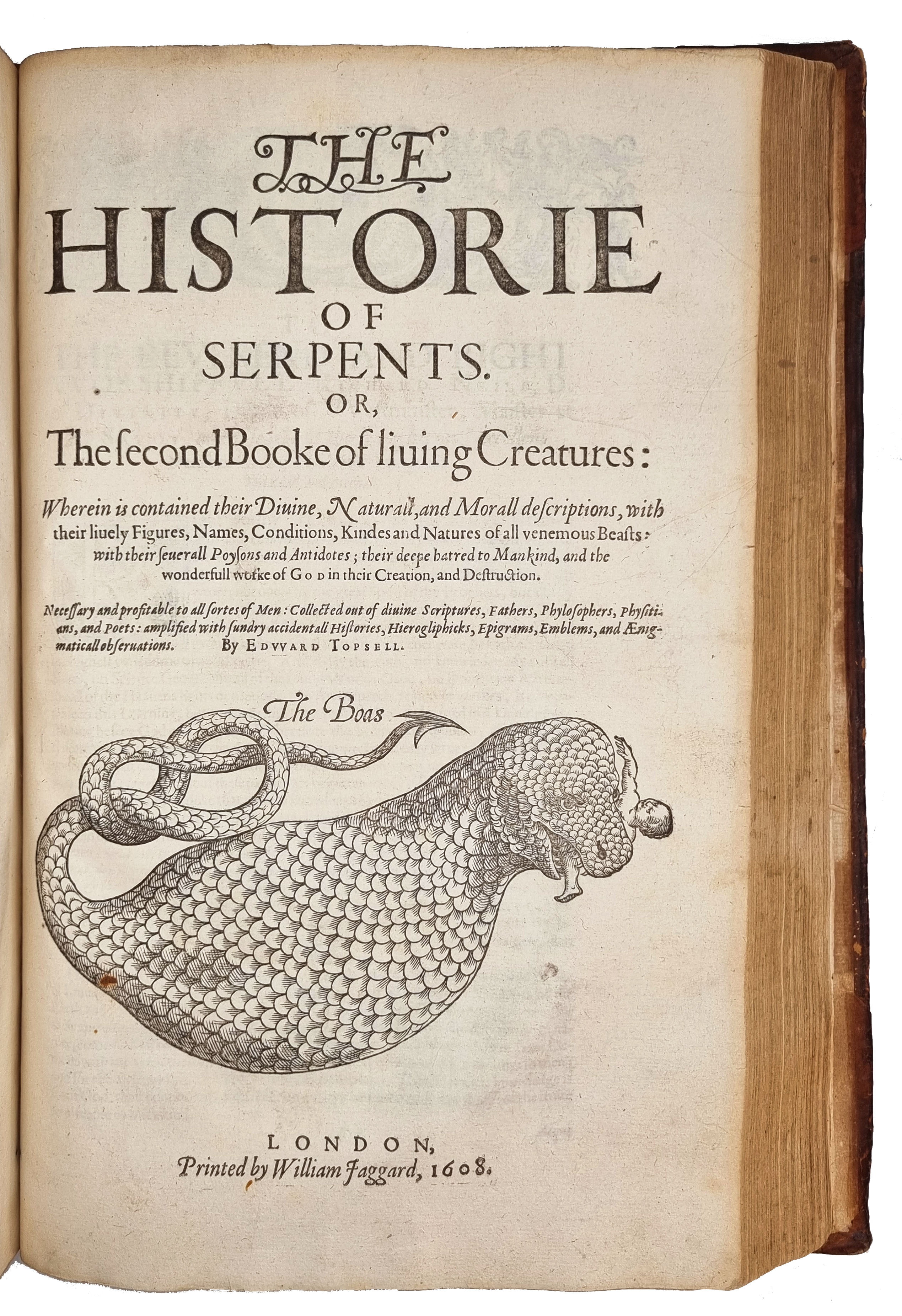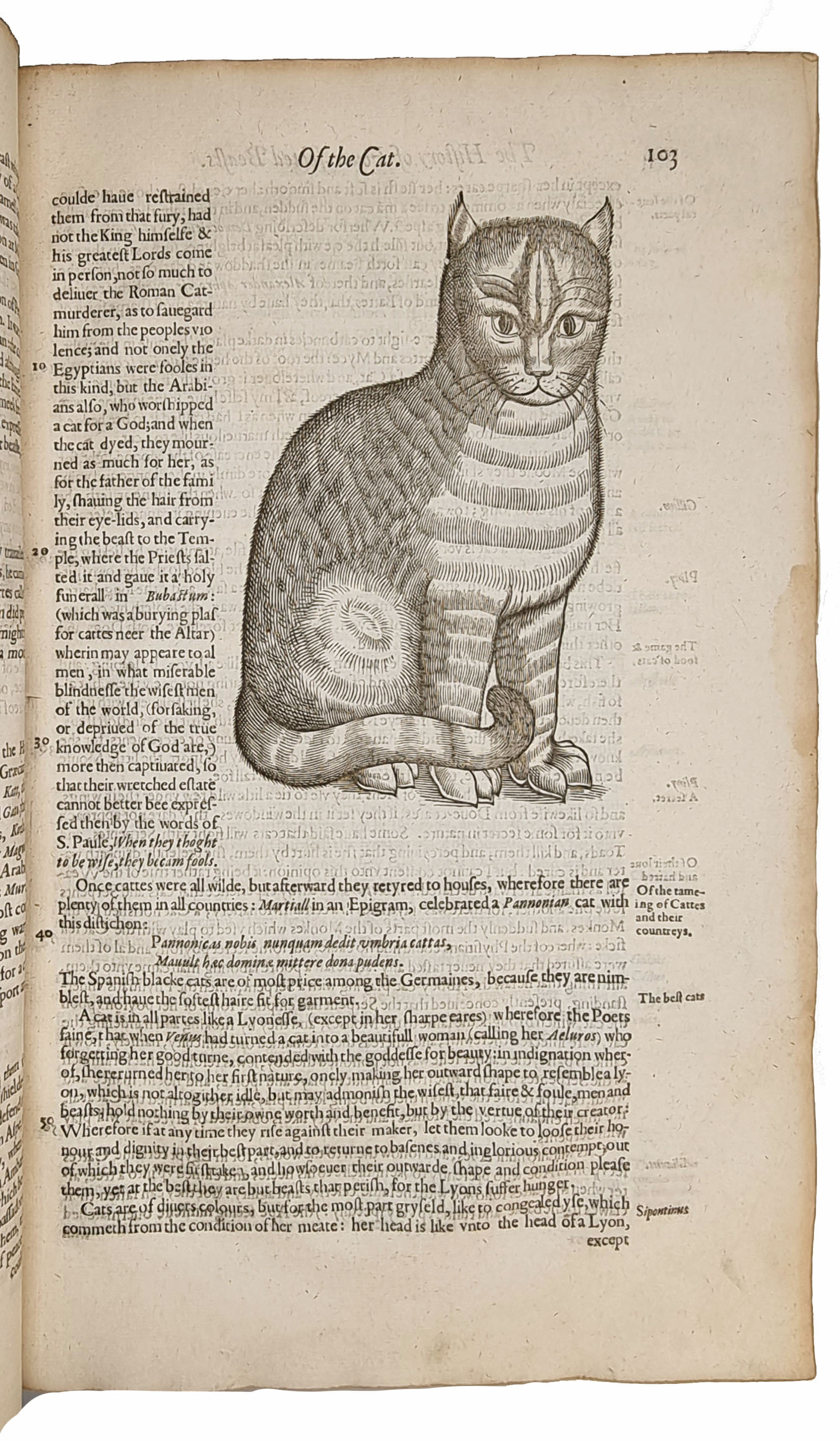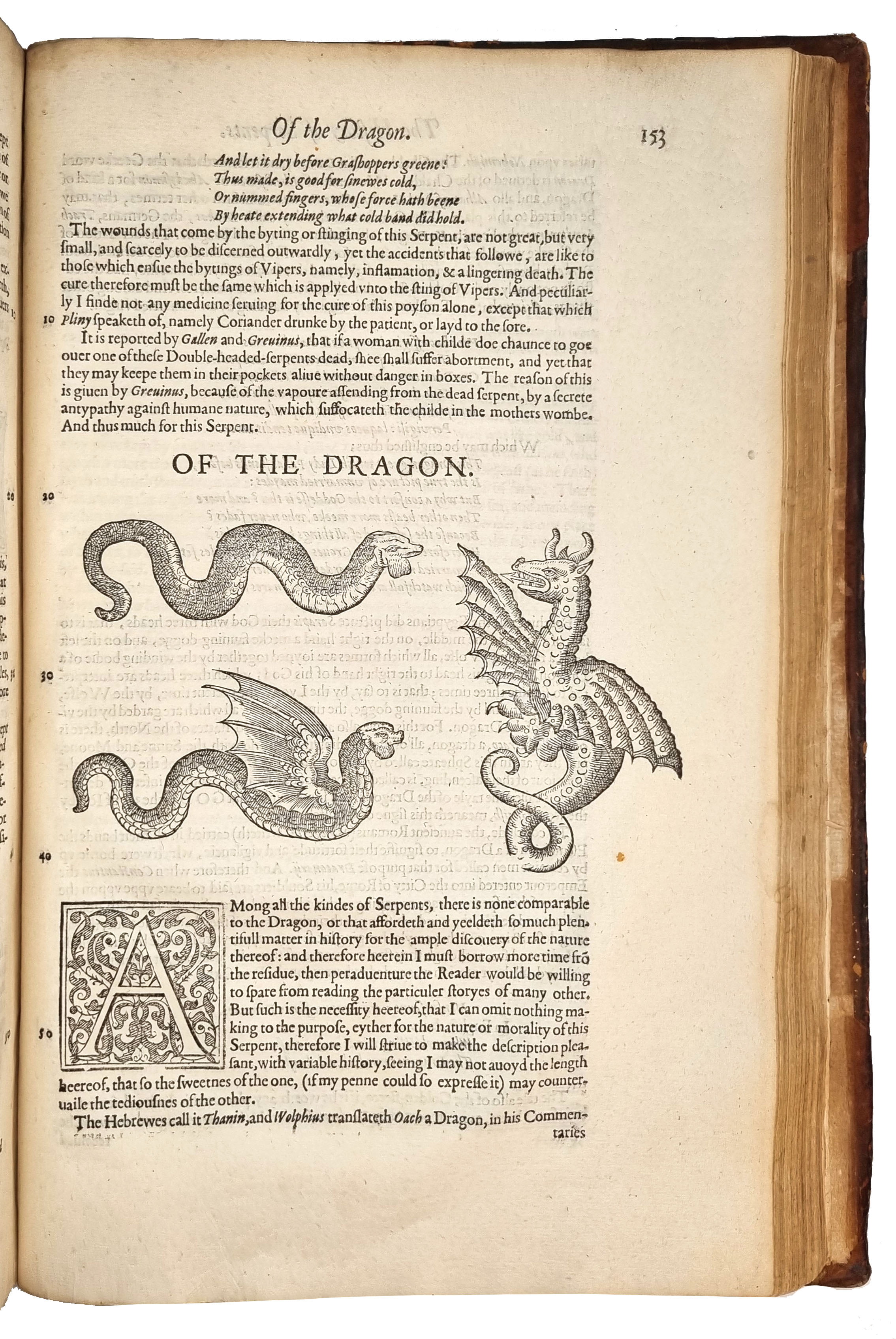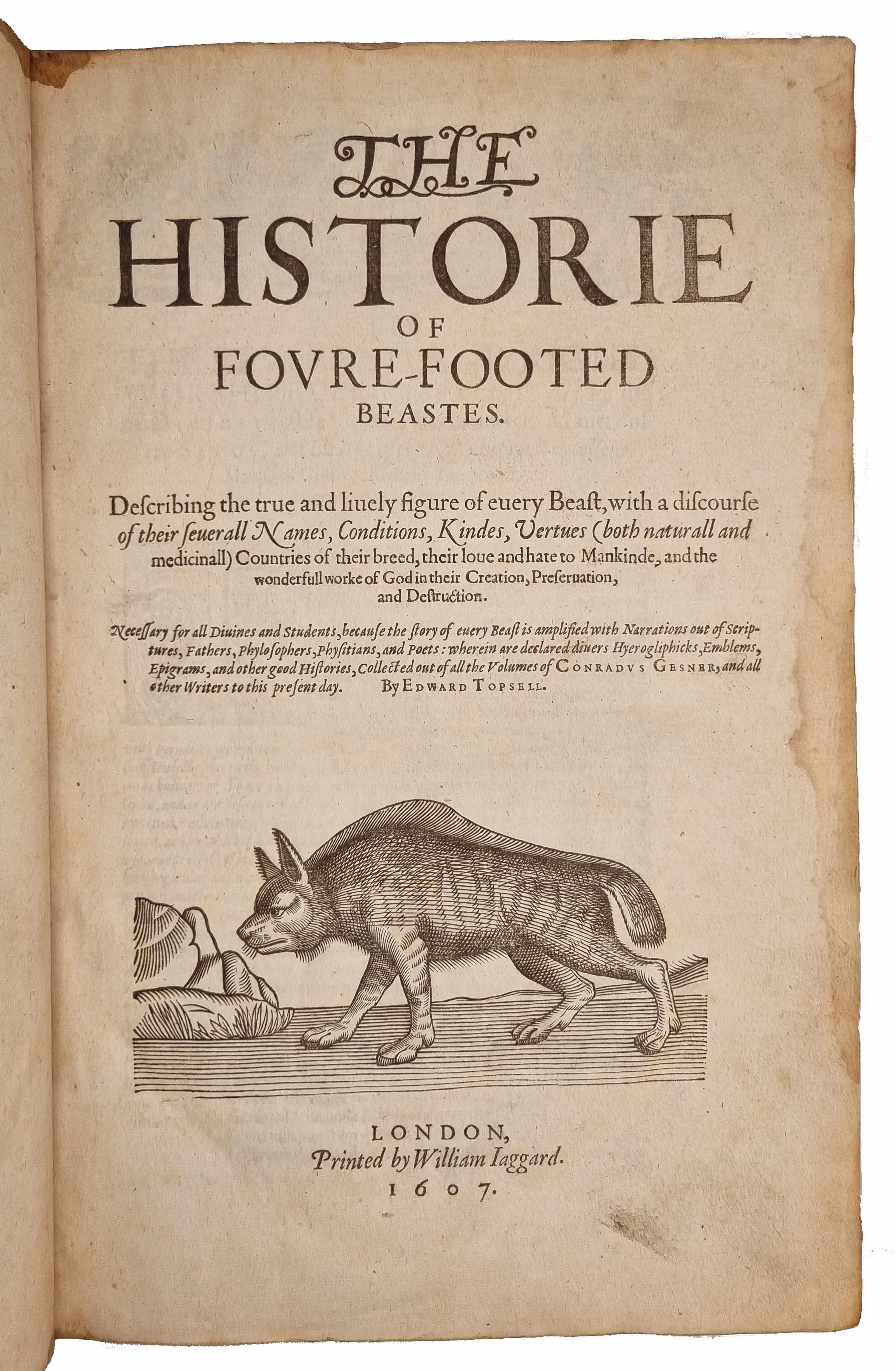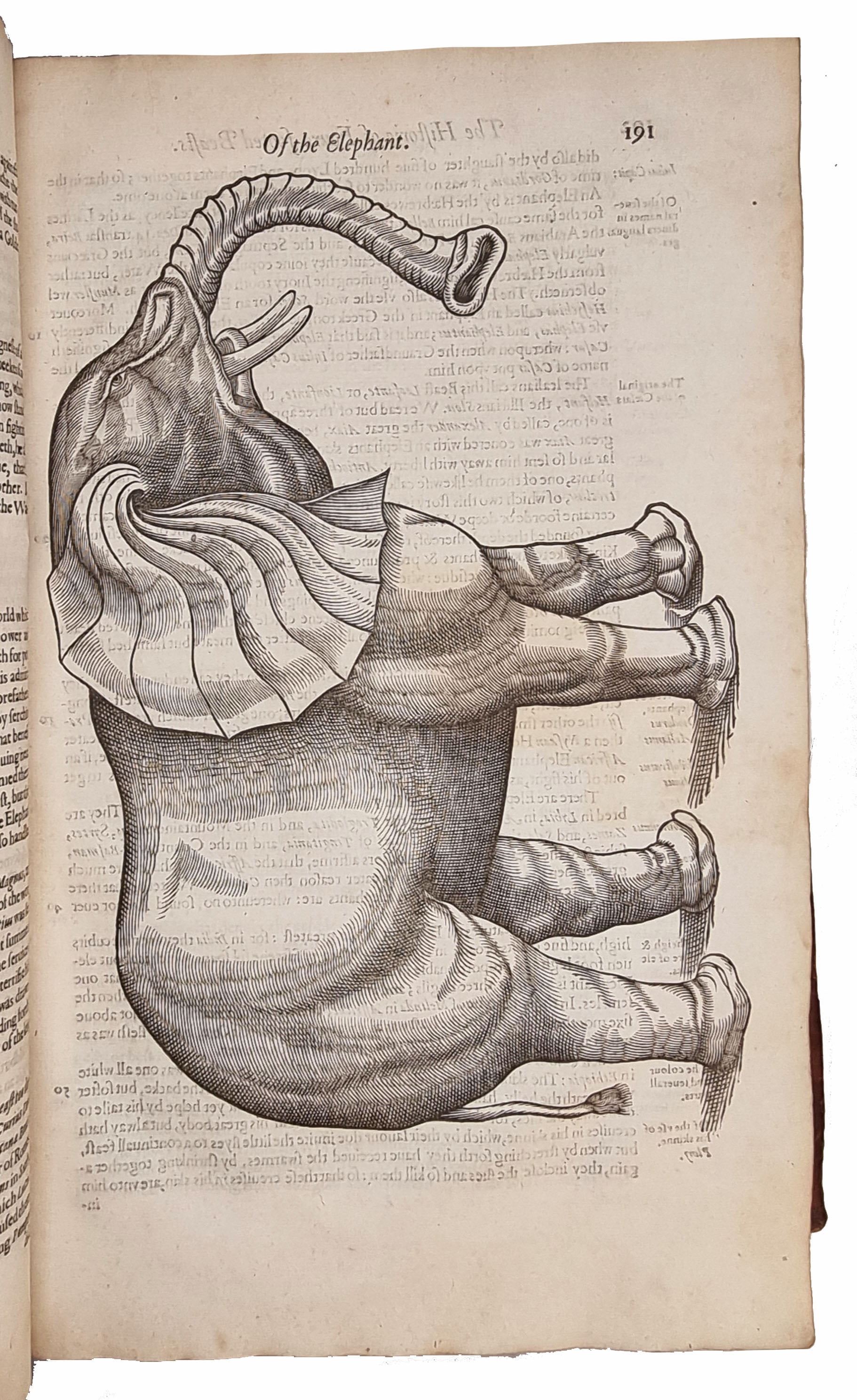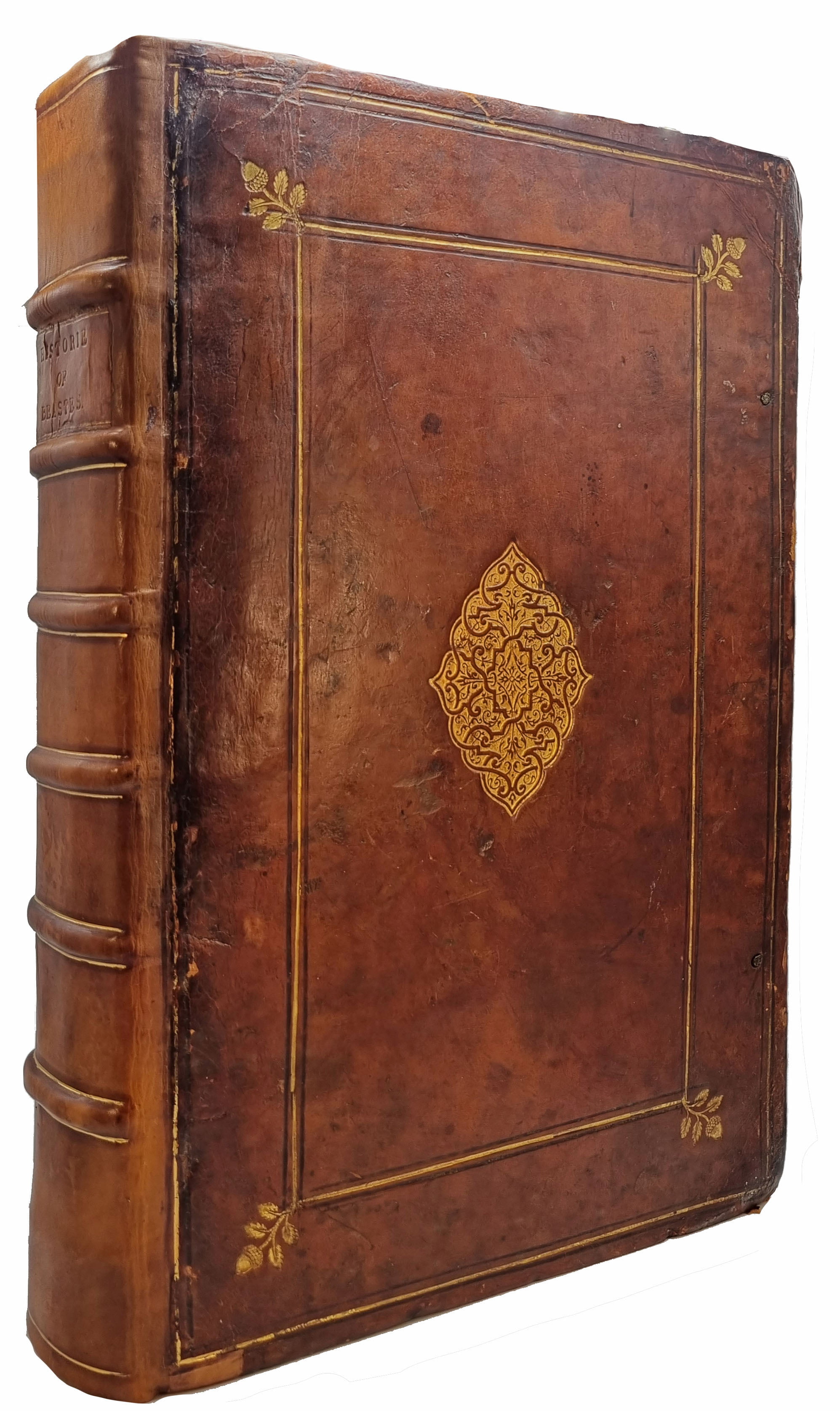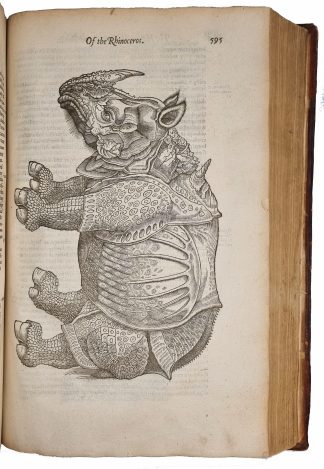TOPSELL, Edward (trans.); GESNER, Conrad
The Historie of Fovre-Footed Beastes [with] The Historie of Serpents
London, William Iaggard, 1607; 1608£29,500.00
FIRST EDITIONS. Folio. 2 books in 1. [xlii] 758 [xii]; [x] 316 [viii]. A [¶] 2[¶] *² B-2V 3A-3X 3Y [first blank, F4+1]. A-V 2A-2H . [first blank]. Roman and Italic letter, first word of titles xylographic, floriated woodcut initials and grotesque head and tail-pieces, typographical and metalcut ornaments, first t.p. with cut of hyena (used for sea wolf on p. 749), pencil note in Pirie’s hand on fly; “This copy and the one in the BM are the only one known with the sea-wolf title-page, most have the Gorgon. A copy with a sea-wolf on the title was lot 481 in the Foyle sale”, second t.p. with the Boa, there is an extra leaf after F4 with heading: “The Picture of the vulger Bugill Folio 57.” in total 155 distinct woodcut illustrations of animals, 15 full-page, eighteenth century engraved bookplate on pastedown, another modern with monogram DP above, Robert S Pirie’s below. Light age yellowing, very minor marginal light waterstain to outer margins in places. Fine copies, crisp and clean with woodcuts in very good impressions, in handsome contemporary polished calf, covers double blind, and single gilt ruled to a panel design, large fleuron with acorn to outer corners, fine strap-work arabesque gilt at centres, spine with raised bands, rebacked, some repair to corners.
First editions in English of Gesner’s work on quadrupeds, illustrating both real and legendary beasts, with an additional work on snakes, including chapters on bees, wasps and flies. Animals are categorized alphabetically, resulting in a few interesting sequences: the Gorgon is beside the Hare, and the Manticore with face of a man, hundreds of sharp teeth, and the body of a lion, is next to a typical Ibex, or Mountain Goat. Although it depicts several mythical beasts in striking (if fantastic) woodcut detail, they are given little space text wise, and the majority of the book depicts European and exotic mammals, and domesticated animals. The largest section describes twenty breeds of dog, as well as an extensive treatment of horses, with an attention to veterinary care and showmanship. Of Cats, Gesner is wary: “this is a dangerous beast…so with a wary and discreet eye we must avoid their harms”. And of the Rhinoceros, ornamented by an imitation of Dürer, he is simply in awe, asking the reader to consider that such a large work on many everyday creatures must also contain “the storie of this Rhinoceros, as the outward shape and picture of him appeareth rare and admirable to his eies, differing in every part from all other beasts, from the top of his nose to the tip of his taile…” The work concludes with useful indices of Latin, Italian, Spanish, French, German and Greek names for each of the beasts featured.
The second part is the first English translation of the last of Gesner’s works on animals, on Snakes and Insects. Unlike his history of Quadrupeds, it begins with an essay on the “Divine, Morall and Naturall” elements of serpents – acknowledging the problematic place of snakes in the history of creation, and moving onto a technical discussion of their anatomy. The work is also distinct from its predecessor in its more consistent (and useful) inclusion of medical authorities and recipes for antidotes. The classification system however is less precise, as if this later work of Gesner’s was more of a catch-all for nature’s miscellany. After Asps, there is discussion of Bees, Flies, Caterpillars, and reptiles such as crocodiles, toads, lizards, turtles, and even dragons and sea serpents. Perhaps more than the streamlined History of Foure-Footed Beastes, the untidiness and slight confusion of this work shows Gesner’s innovations for what they were: straddling the divide between the received knowledge of natural history and the push for newer forms of classification through observation that would define zoology. An unusually good, clean copy of a much read work, more often found defective or incomplete.
Edward Topsell (d. 1638?), matriculated from Christ’s College, Cambridge in 1587 and was appointed in 1604 as curate of St. Botolph, Aldersgate. Author of the popular Reward of Religion, lectures on the book of Ruth which reached three editions in his lifetime, his claim to posterity is nevertheless his translation of Gesner’s zoological works.
Conrad Gesner (1516 – 1565), is known as the Pliny of Germany, whose prolific writings are considered the foundations of modern zoology.
ESTC 24123, 24124. Sabin 27228. Wellcome I 6323. Alden 607/93 “On p. 660 is a description of Patagonian giants who clothes themselves with skins of the ‘Su’ with illus. derived from Thevet’s Singularitez de la France antartique, chapt. lvi.” and 608/166 “On p. 141, with illus. is a description of a Brazilian alligator.” Lowndes VII 2698, later ed. On horses, Mennessier de la Lance I p.547 describes in depth the Latin original.In stock



